Author Archive admin
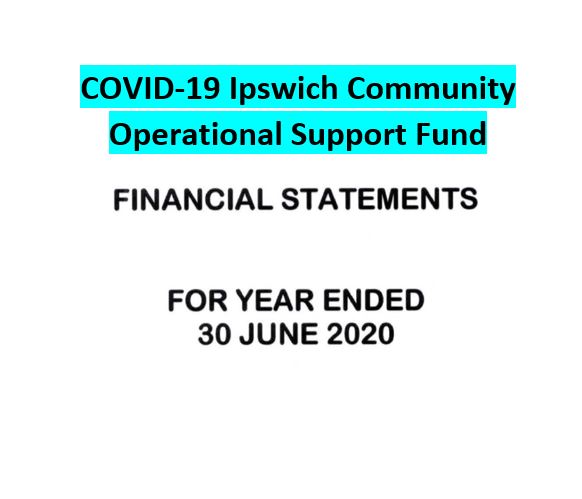
Big thanks to Ipswich City Council funding
In September 2020, SLNC was notified that we have received funding from the “COVID-19 Ipswich Community Operational Support Fund”. This really helped us financially.
Due to us gaining a $20,000 Australian Government CEP grant, we were above the revenue cut-off that required us to get our Annual Financial Report audited by an independent accountant. This is a requirement under the Queensland Office of Fair Trade for the Annual Returns for Incorporated Groups.
This expense was unbudgeted, and the CEP grant did not cover administration costs. Our usual big revenue maker, an annual Bunnings BBQ and Mother’s Day raffle, were suspended indefinitely due to Covid-19 restrictions.
The “COVID-19 Ipswich Community Operational Support Fund” money was used to hire an Ipswich-based accountant (Wards Tax & Accounting Services in Rosewood) that has previously audited other community Landcare groups and understands the type work and projects we do.
Their report found that everything was in order, and the report was used for the Queensland Office of Fair Trade – Annual Return, and for the Australian Charities and Not-for-profits Commission – Annual Return.
Thank you Ipswich City Council for thinking about the impacts of Covid-19 on community groups.
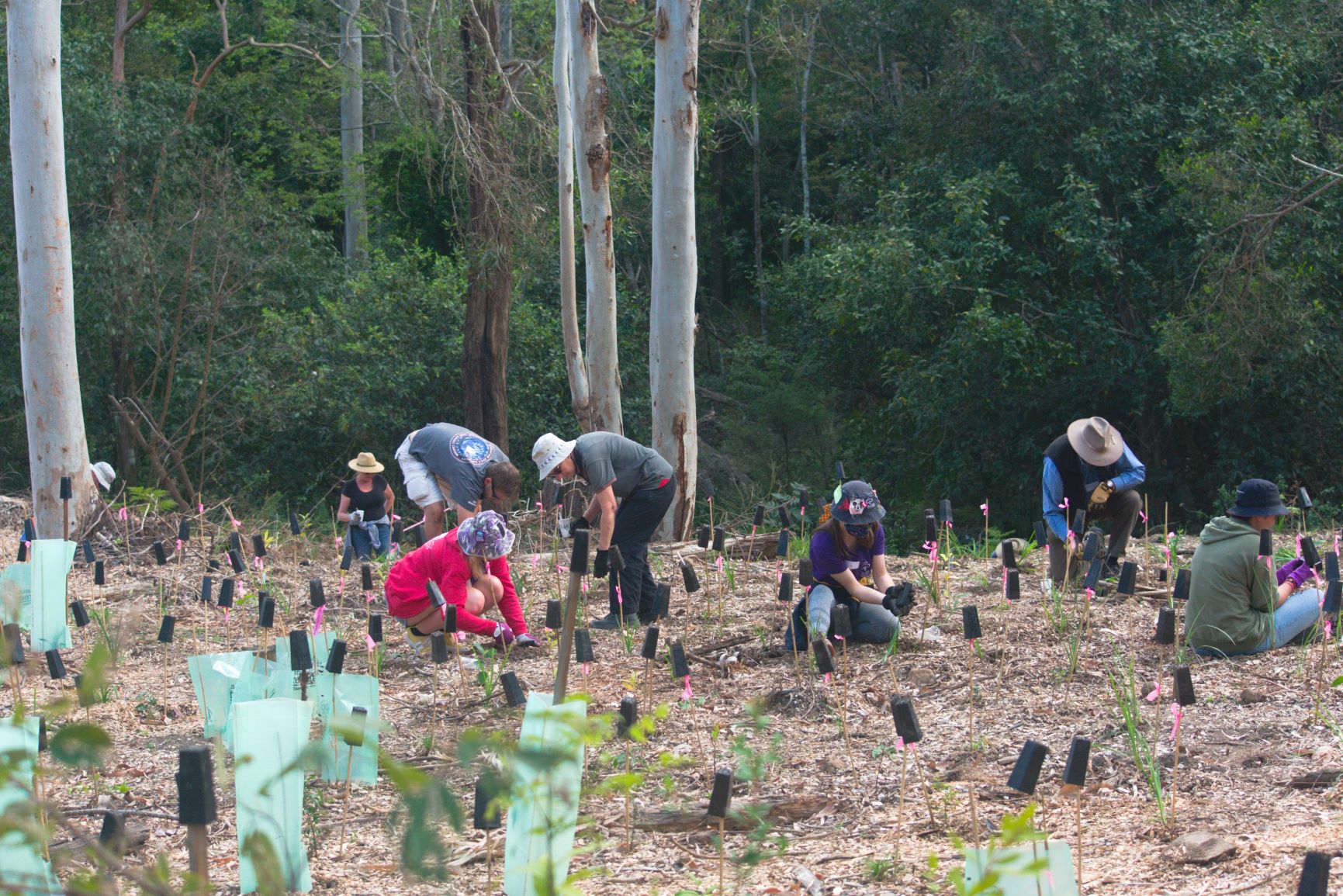
Bushcarers’ Day Out – public tree planting
On 13 September 2020, 37 volunteers from the public helped Opossum Creek Bushcare to plant 550 native trees and shrubs.
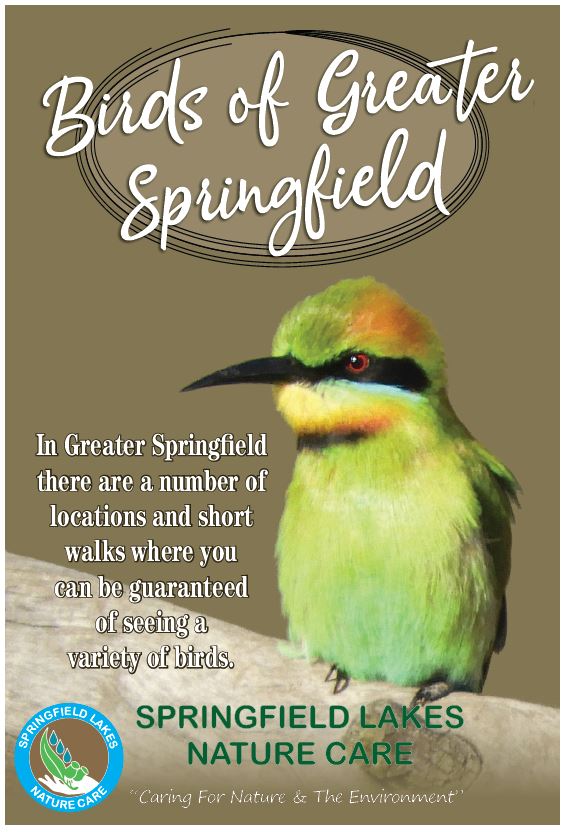
Launch of “Birds of Greater Springfield – a birdwatching guide
SLNC, with funding from Ipswich Council, has developed a “Birds of Greater Springfield” birdwalk booklet for 6 sites in the Greater Springfield region, with directions and photos of the birds one is likely to see on each walk. Booklet can be downloaded here.
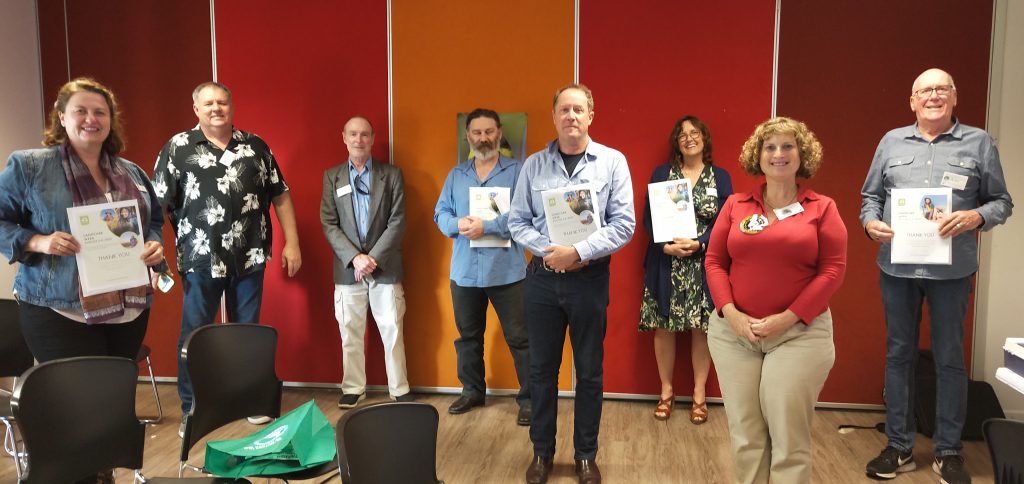
We had 5 guest speakers, Ipswich City Mayor Teresa Harding, Professor Hugh Possingham, birdwatcher Peter Gelding (SLNC member), local veterinarian Jeannet Kessels, and Bill Heck who spoke about how to grow a bird friendly garden (download brochure here). Also in the photo is Michael Kruck (SLNC member) who developed a Native Bird computer screensaver, Graeme Donaldson who was one the photographers who kindly provided photos for the booklet, and Luise Manning (President SLNC).
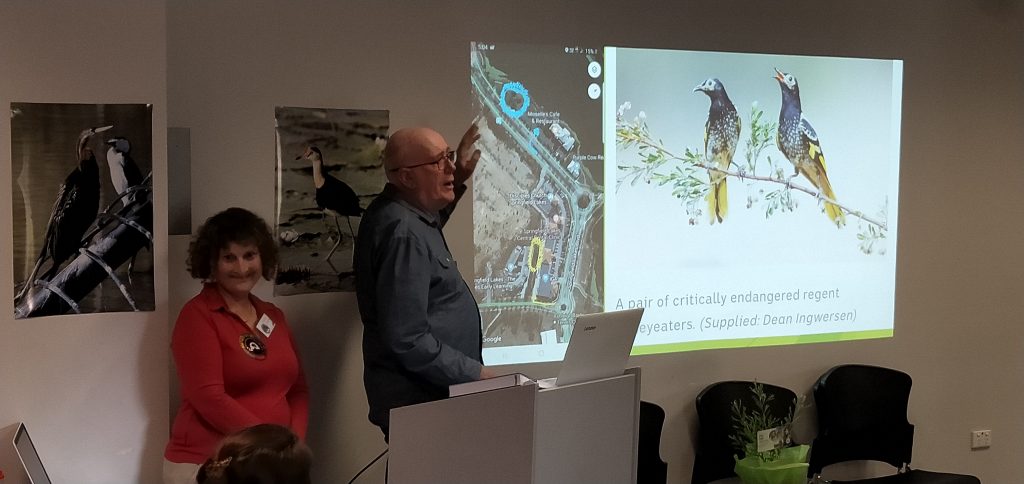

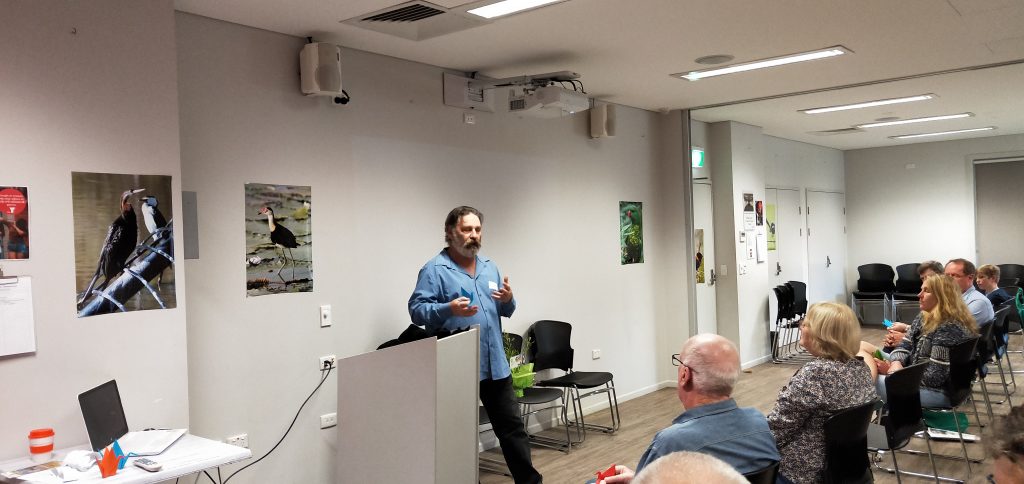
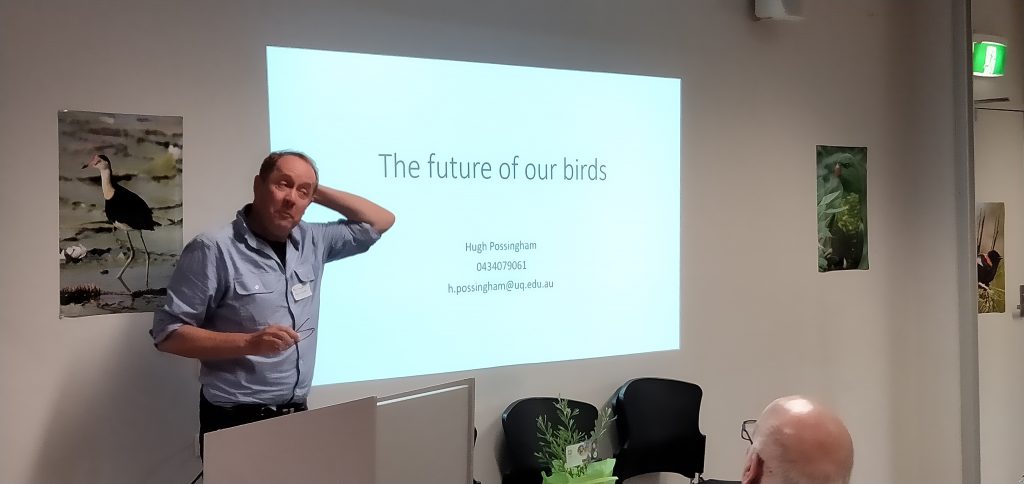

After the presentations, everyone ventured across the road to use the Birdwalk booklet at one of the 6 sites – Spring Lake. 14 species were observed, including Little Black Cormorants and a Great Cormorant.
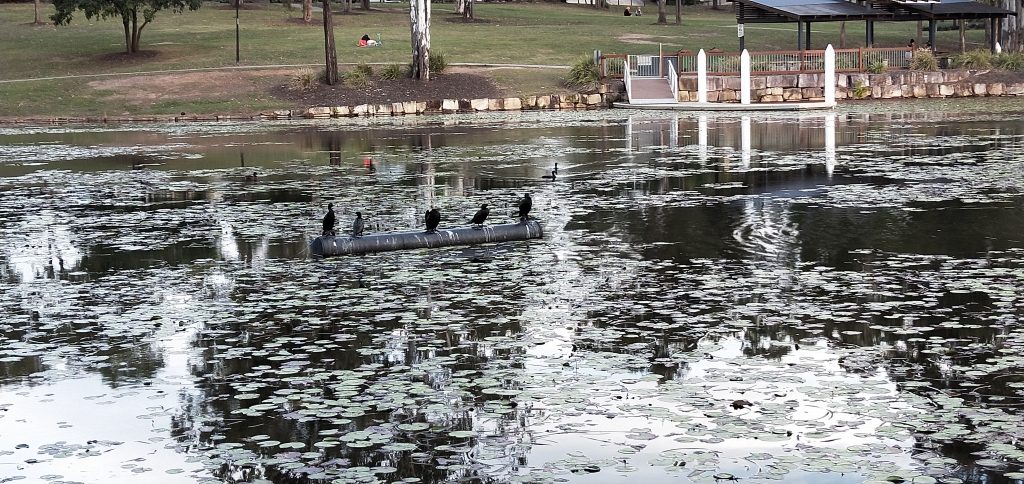
Birdwalk sites include:
- White Rock Spring Mountain Conservation Estate (between Regatta & Discovery Lakes
- Regatta & Discovery Lake
- Spring Lake Parklands
- Creekside Parkland
- Robelle Domain
- Opossum Creek Parklands
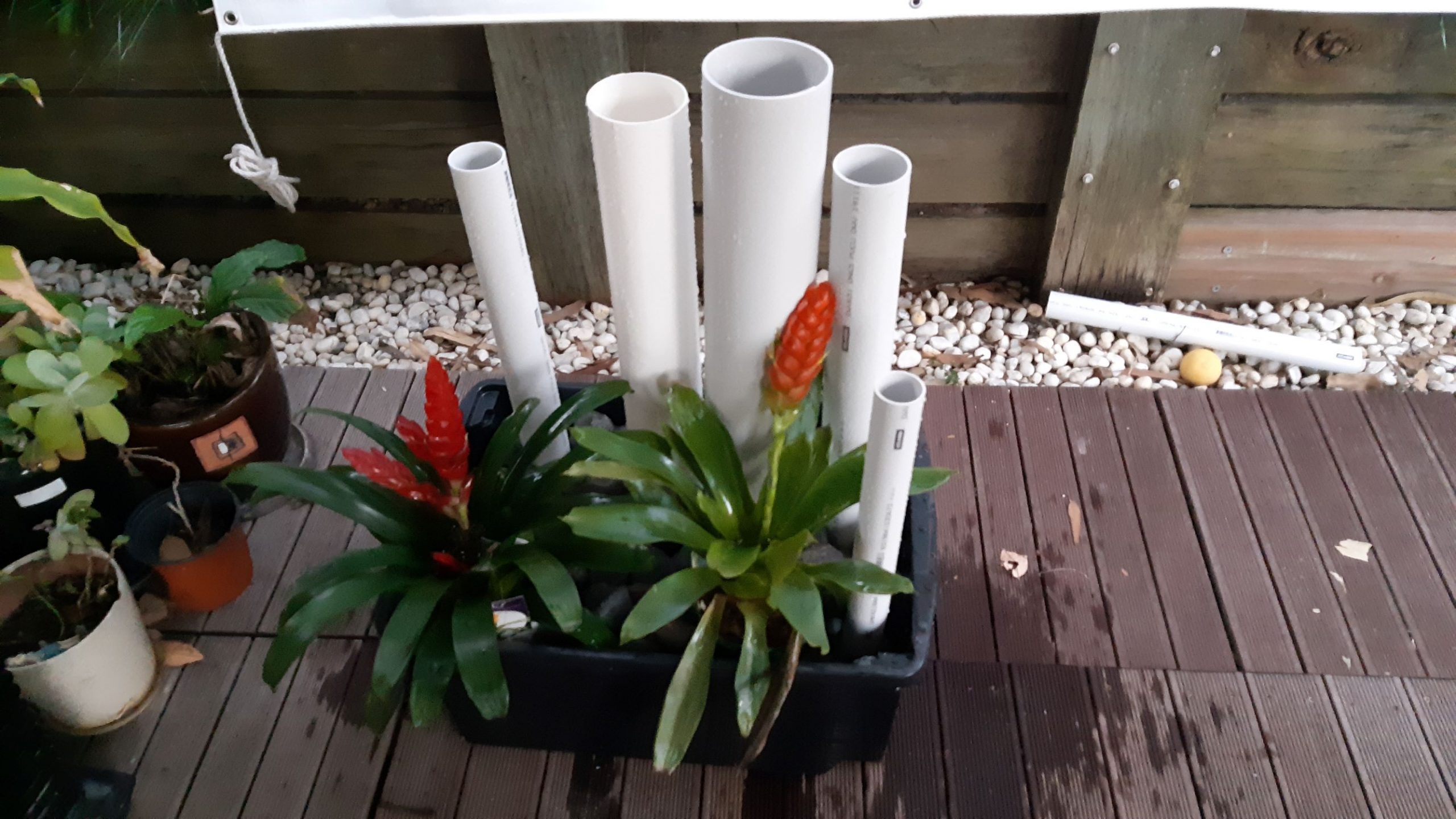
How to Build a Frog Hotel
You can build your very own frog hotel to attract frogs to your backyard and keep them safe from predators.
Watch this video to see how easy it is to build.
Then build your own using these instructions “How to Build a Frog Hotel“.
Check out more information about the Frogs of Greater Springfield and how you can help map their occurrence under Our Projects page.
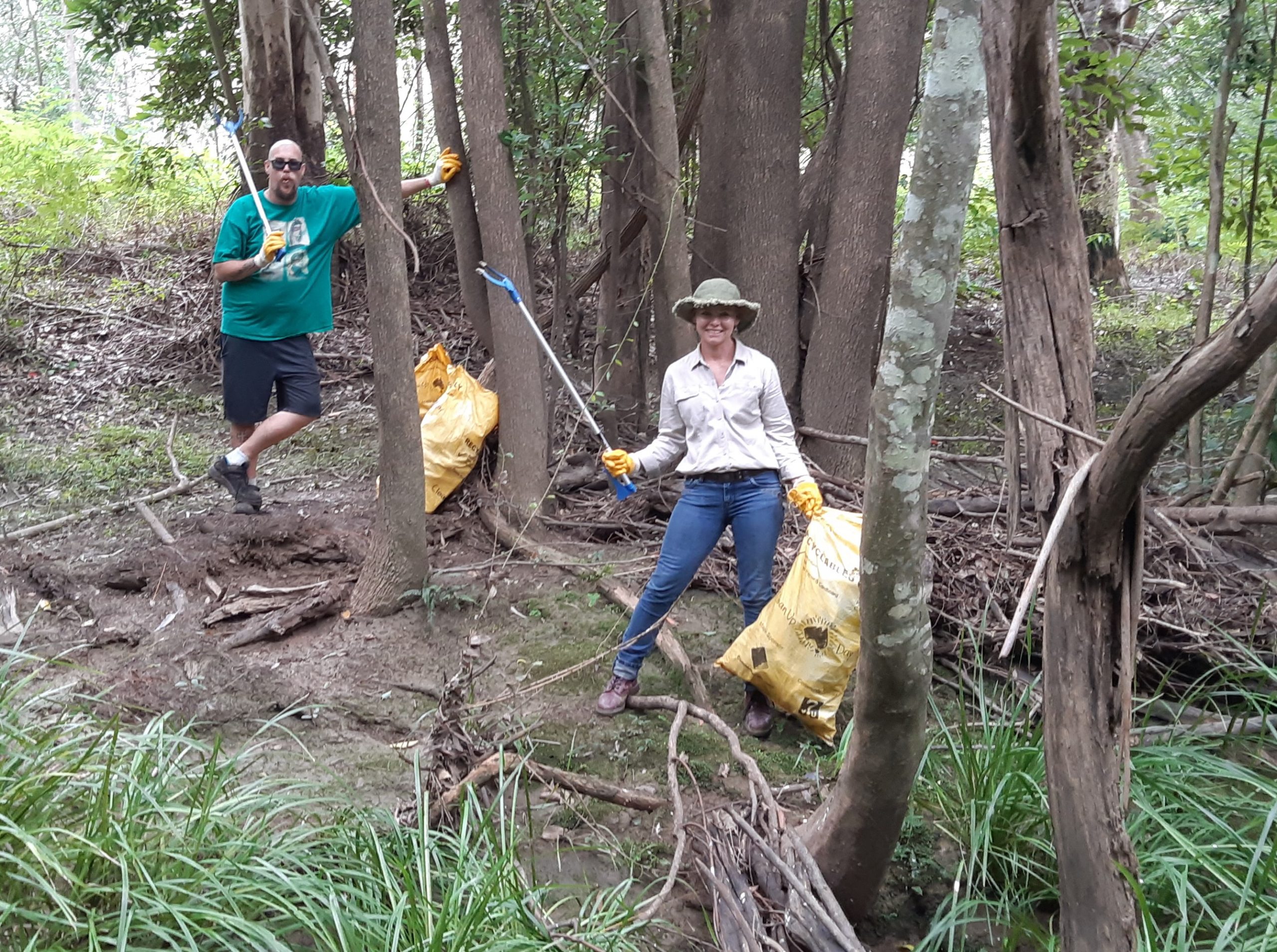
Opossum Creek Bushcare
SLNC is now part of the Ipswich City Council “Bushcare” Program, looking after a patch of native bush along Opossum Creek in Brookwater.
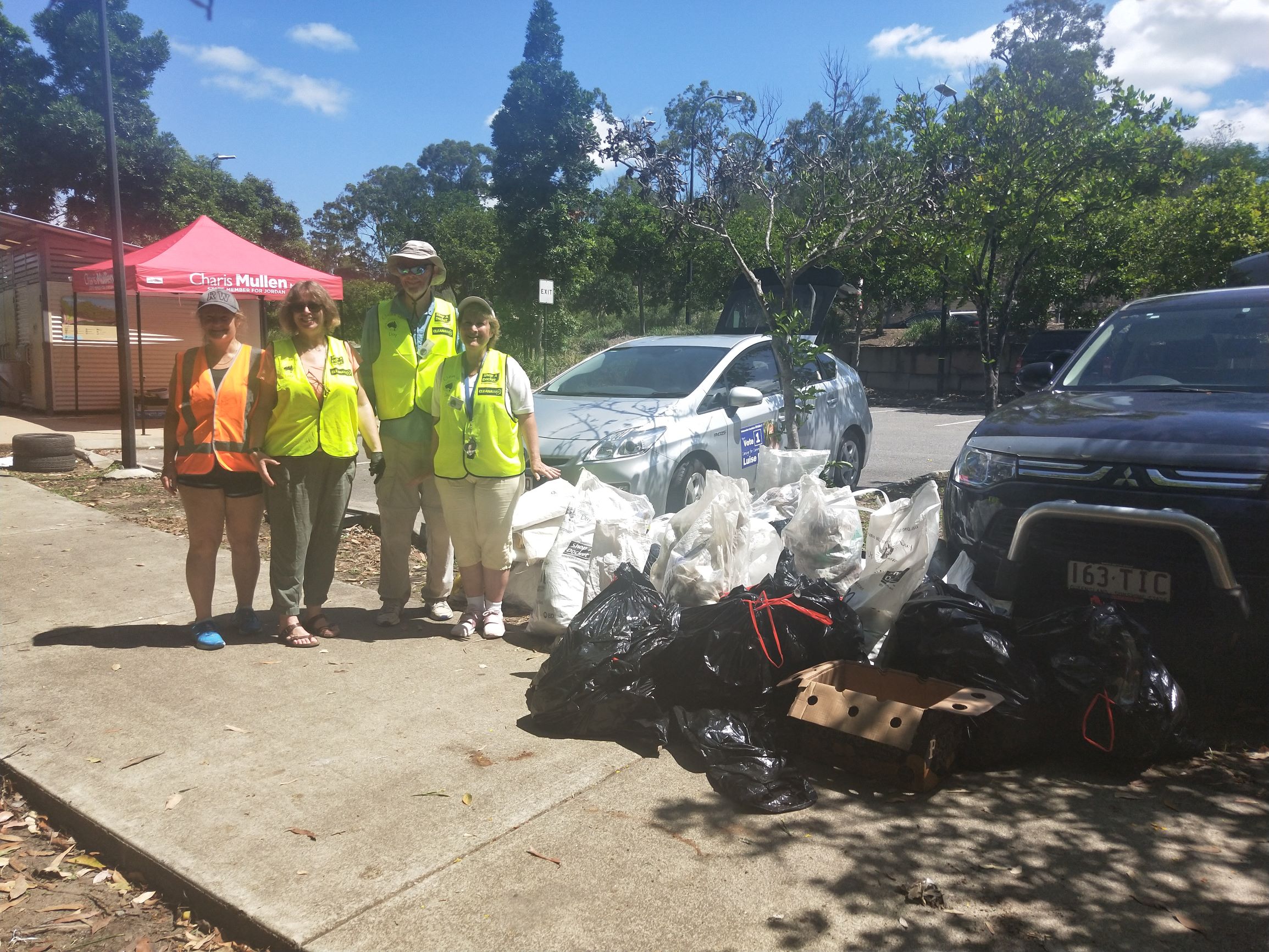
Clean Up Australia Day 2020
Big Clean Up around the lakes nets great litter results!
Sunday March 1st 2020 was Clean Up Australia Day and 177 people “stepped up to clean up” and helped Springfield Lakes Nature Care (SLNC) to clean up the area around Regatta and Discovery Lakes, and a separate area at Spring Mountain. This was the 5th Clean Up Australia Day event organised by SLNC President Luise Manning, growing from only about a dozen people in 2016, to the numbers seen today.
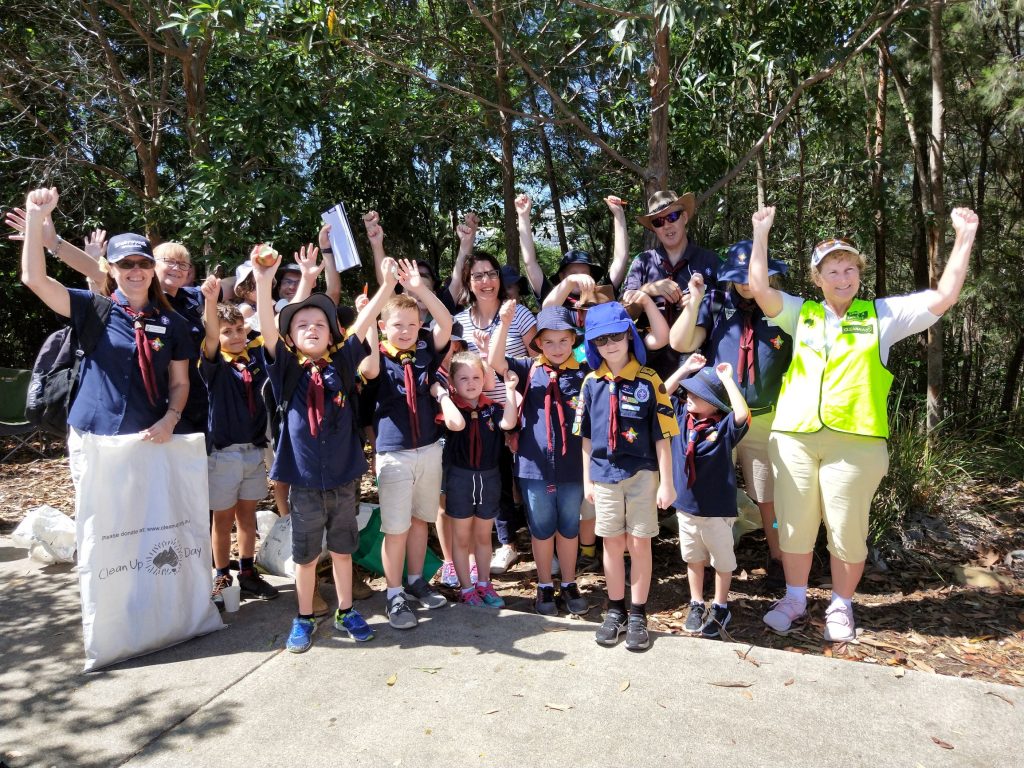
132 people, including 54 children younger than 13 years volunteered to clean up around the Lakes and surrounding streets, whilst 45 members of the Springfield Malayalee Association (including 25 children) cleaned up the streets of Spring Mountain.
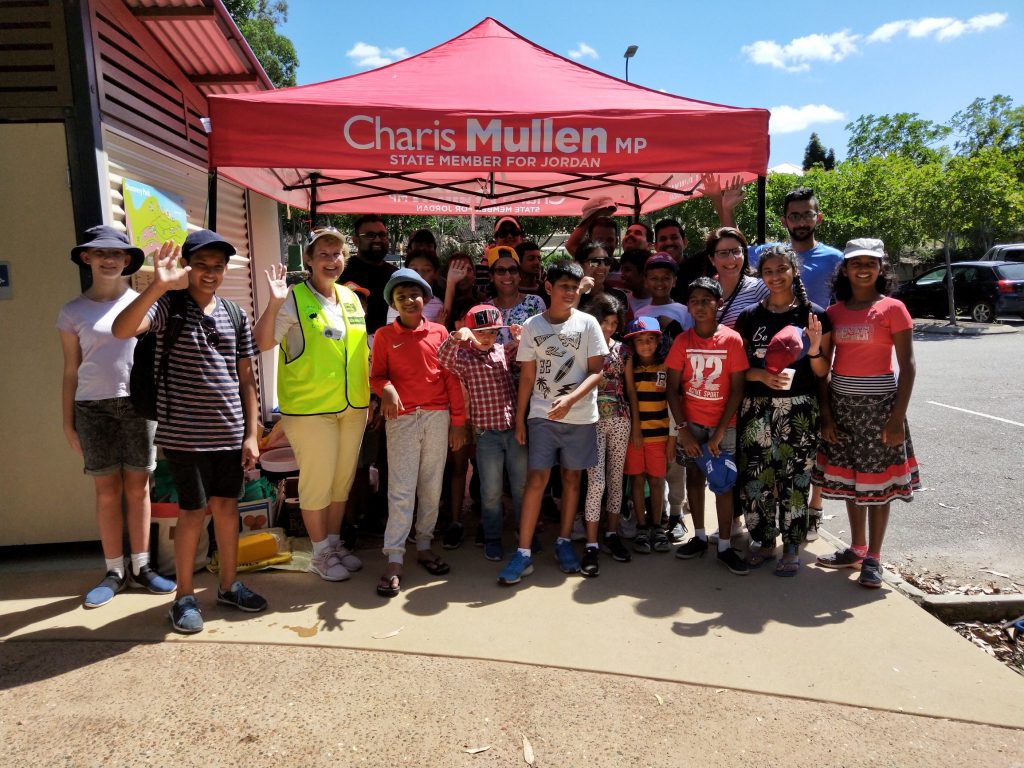

In addition, 3 adult paddlers collected material floating in the two lakes.
All litter collected was brought down to the Discovery Lake carpark for the audit report to be conducted. The rubbish was disposed of in the skip-bin provided by Ipswich City Council (except for the tyres which were disposed of separately as they do not go into landfill).
In comparison to last year’s litter audit, there was a distinct decrease in the number and proportion of drink containers of the type that can be recycled through the COEX “cash for containers” scheme. Anecdotal comments suggest that the number of people littering their neighbourhood by discarding drink bottles whilst walking or driving through has stayed the same, but community and environmentally aware citizens are picking up these bottles and cans before they make it into the natural environment and our lakes. There was also less builders waste (such as polystyrene, PVC pipes and plastic wrapping), probably because almost all building on “The Peninsula” has been completed. Only 3 supermarket/retail bags collected, showing that the plastic bag ban is working.

The dominant form of litter was small and large bits of paper, newspapers, cardboard/polystyrene fast food containers/packaging, and COEX drink containers. There were also plenty of plastic straws, and this needs last item to be the focus of future efforts to reduce plastic in our environment. Unusual items collected this year were 1 bicycle, 2 car tyres, 1 chair and 1 garden hose. Not quite as impressive as last year’s half kayak.
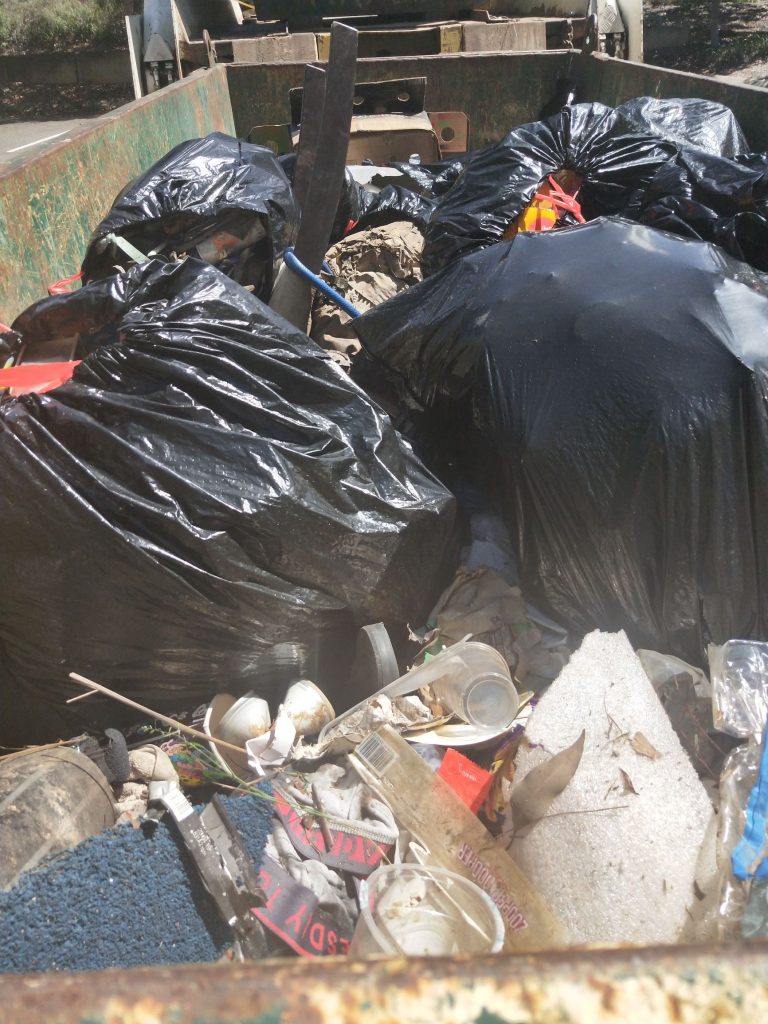
Some 19 full garbage bags of litter were collected, including 10 bags of recyclable COEX containers which were donated to SLNC.
SLNC gratefully thanks all those that turned up to help clean up our neighbourhood, the Springfield and Goodna Girl Guides, Redbank Plains, Goodna and Camira Scouts, Greater Springfield Rotary Club, and the Springfield Malayalee Association.

We would like to thank our sponsors, Lendlease and IGA Springfield for supporting the event and providing the refreshments and fruit and Milton Dick MP for the cake for morning tea. We also thank Ipswich City Council for the funding from the Environmental Grant which helped cover the cost of core flute signs and flyers to promote the event and the provision of a professional first aid officer.
If anyone else would like to donate plastic and glass bottles and aluminium cans to SLNC and help us run environmental events, then please take them to the Night Owl at Spring Lake Metro, or another COEX deposit centre, and using our registration code “C10002285” the funds will be direct credited to SLNC’s bank account.
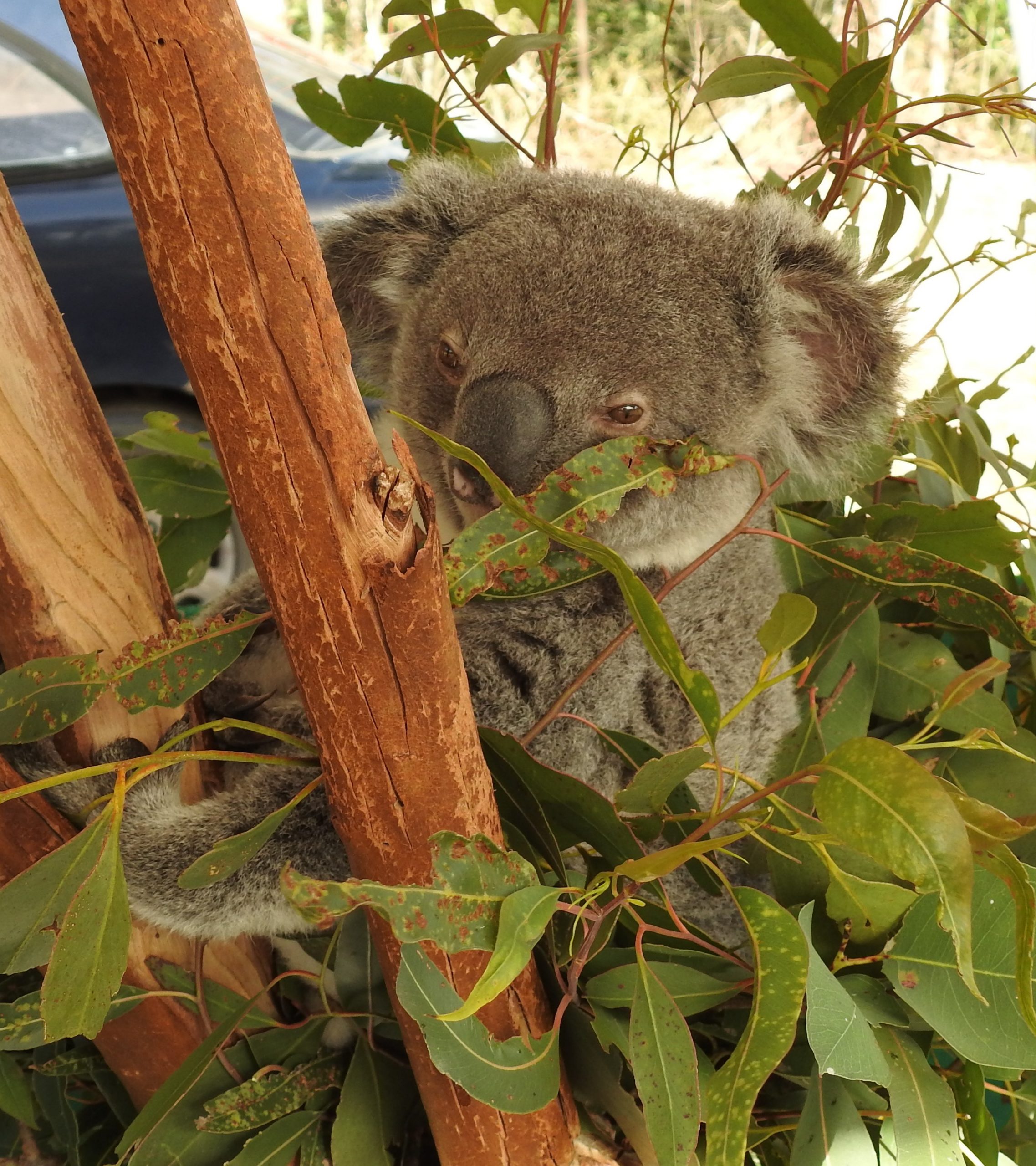
Threatened Species Day 7 Sept 2019
This event, the first ever Threatened Species Day event by SLNC, was held to commemorate the 10th Anniversary of the deaths of Lloyd Bird and Ric Nattras, two hard working environmentalists that had a lasting effect on the natural environment in the Greater Springfield area.
Their achievements were recognised by the planting of two Birdwing Butterfly vines, which we hope will attract the gorgeous Richmond Birdwing Butterfly back into the area.
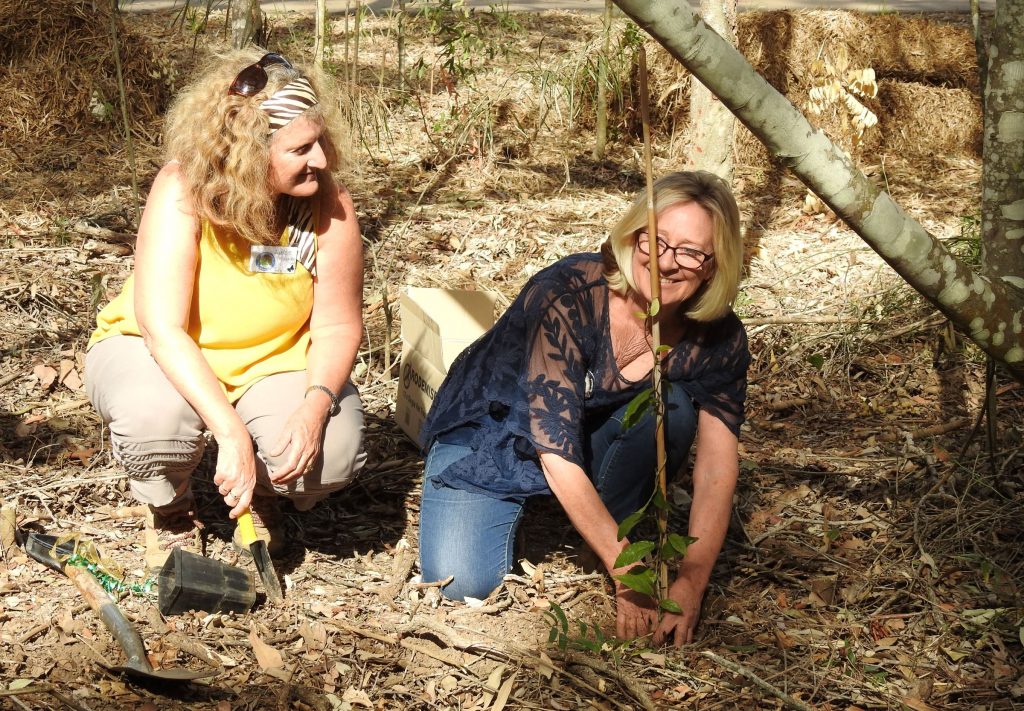
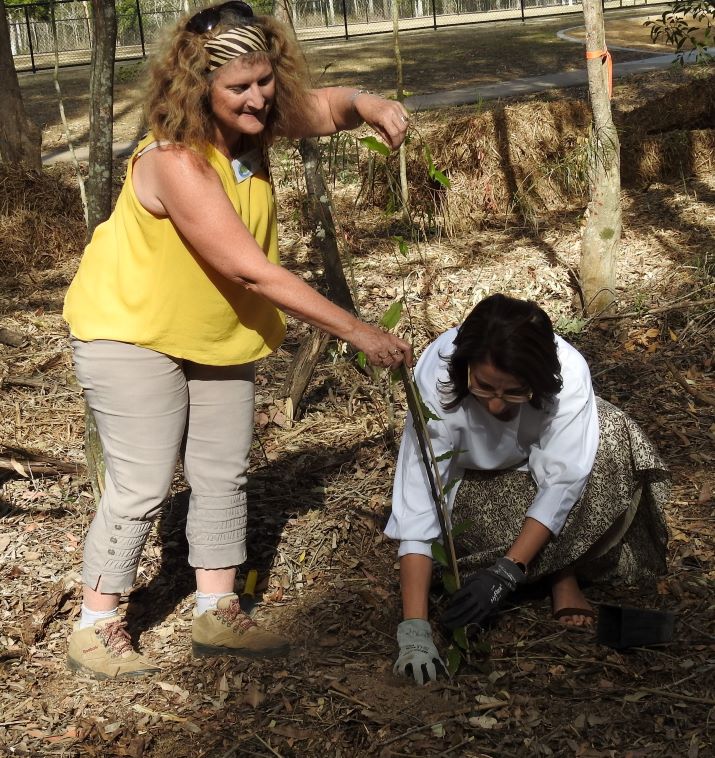
The event was held at Opossum Creek Parklands at Scoparia Drive, Brookwater. Groups that contributed with information stalls included:
- Queensland Mycological Society (fungi)
- Birds Queensland
- Koala Rescue
- National Parks Association of Queensland
- SEQ Frog Society
- West Moreton Landcare
- Queensland Water and Land Carers (QWaLC)
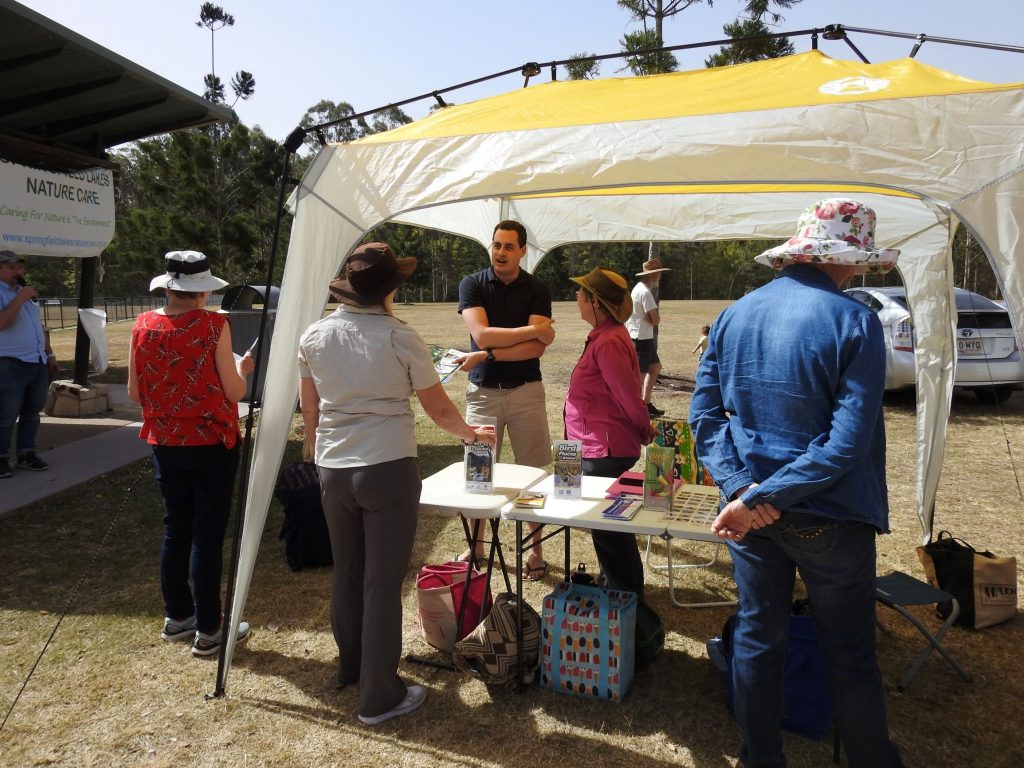
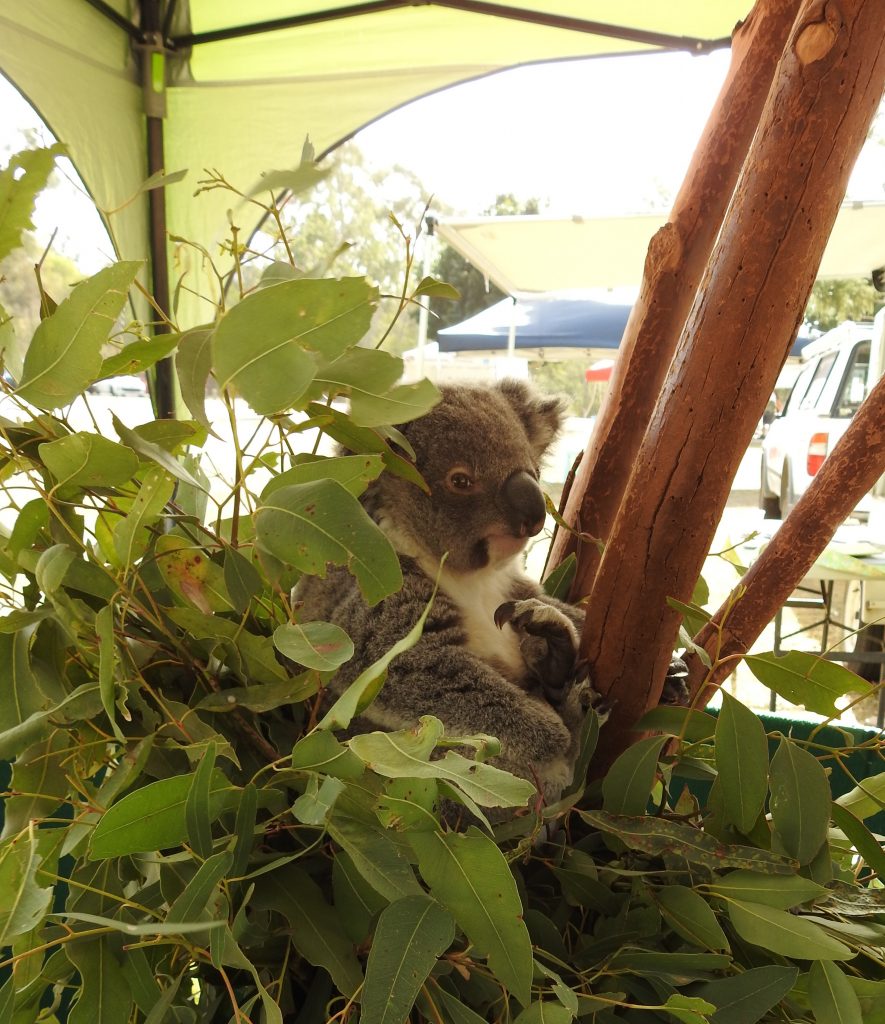

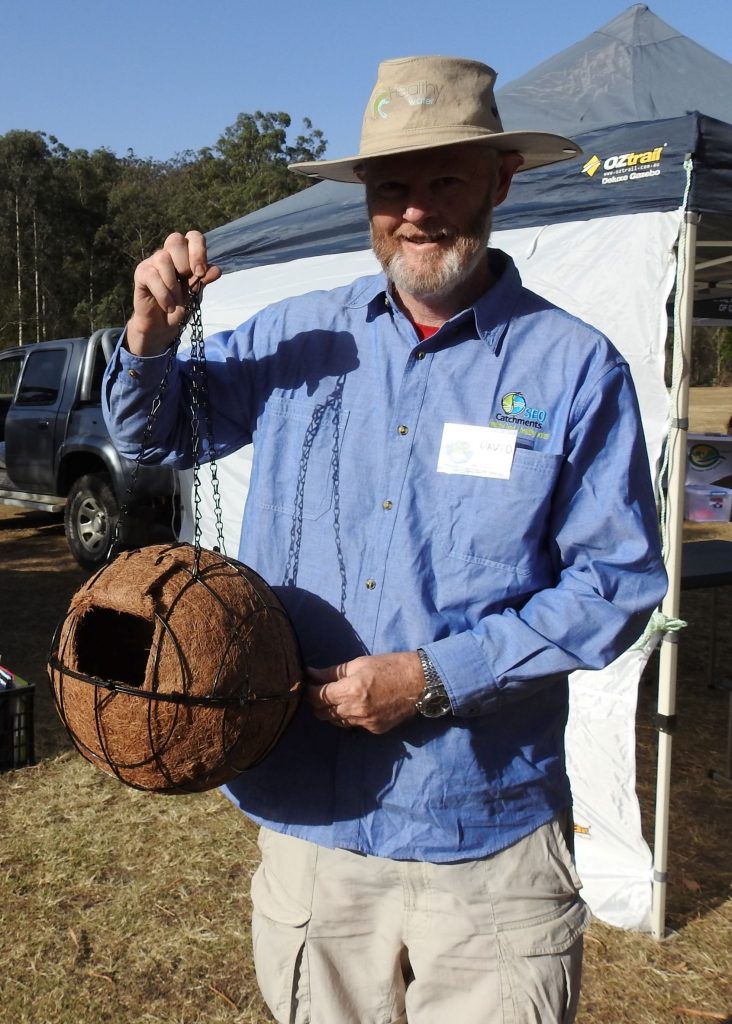
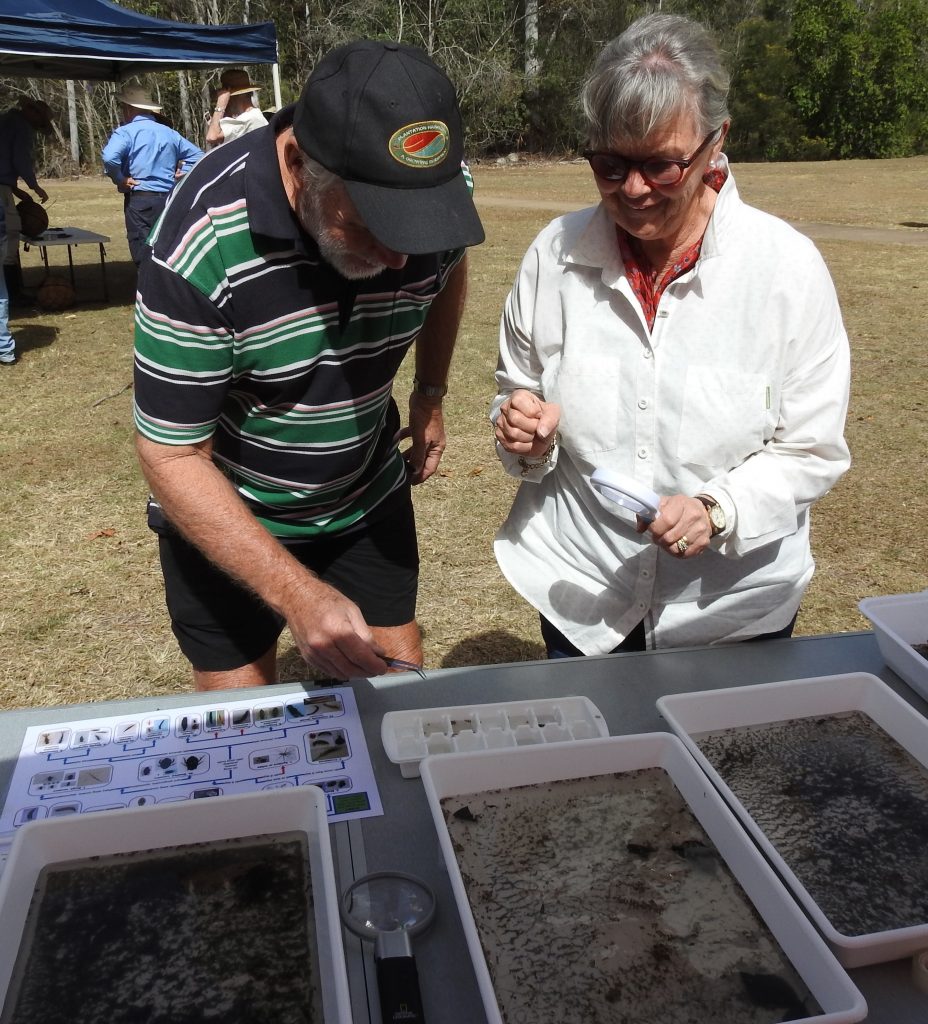
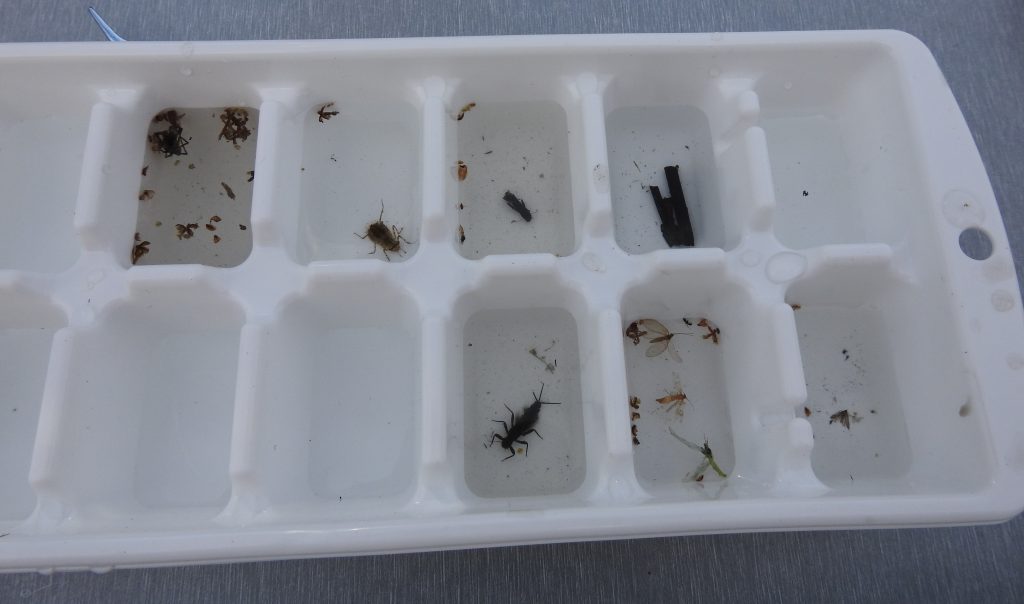

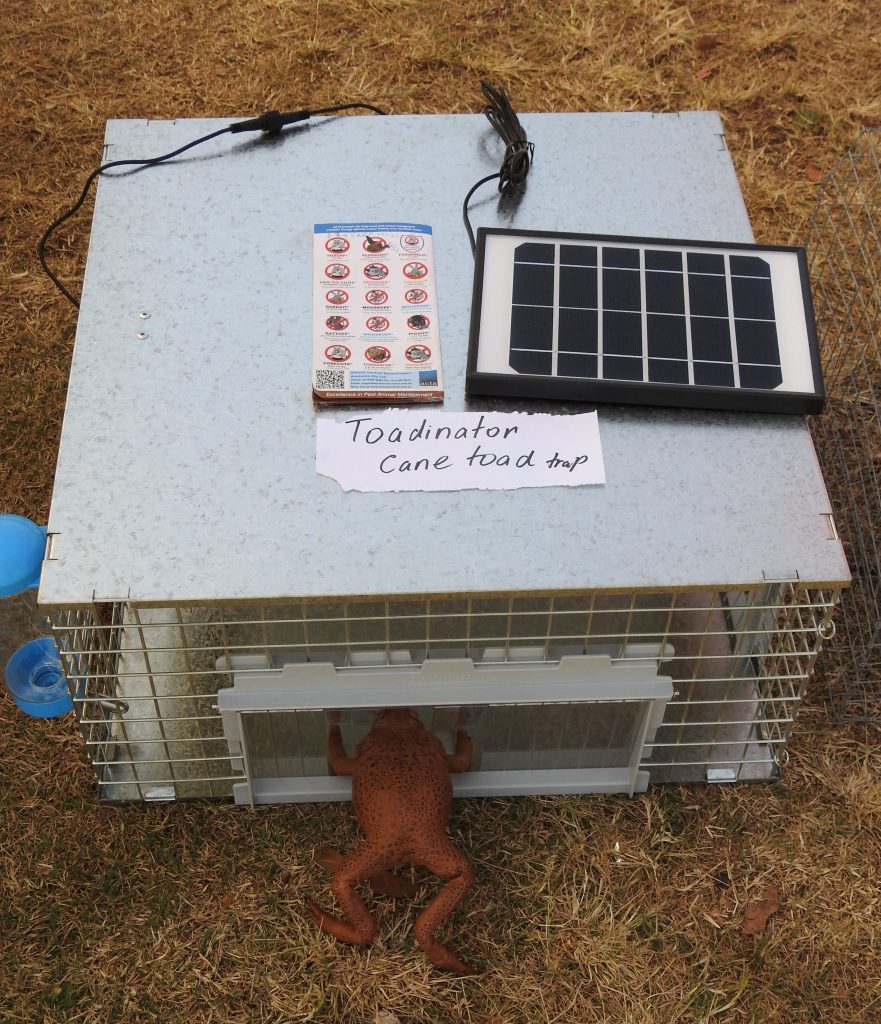
.

Myna traps
To catch common (Indian) mynas – which are becoming a major feral pest to our native wildlife
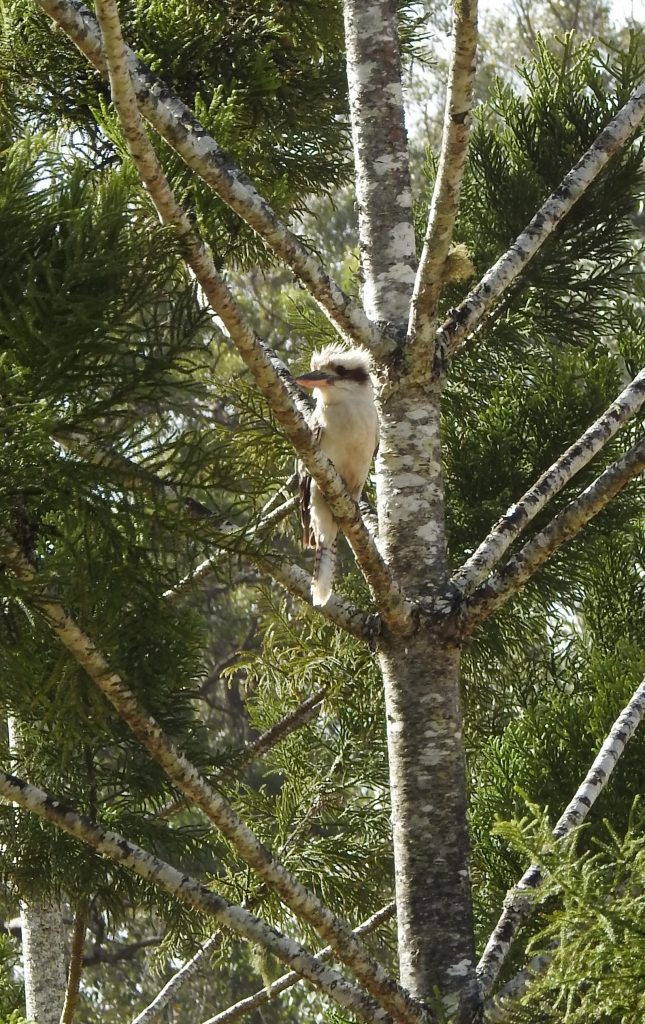
The Event concluded with a short walk to the Lloyd Bird revegetation site. This is a popular spot for little birds and several species were seen through binoculars.
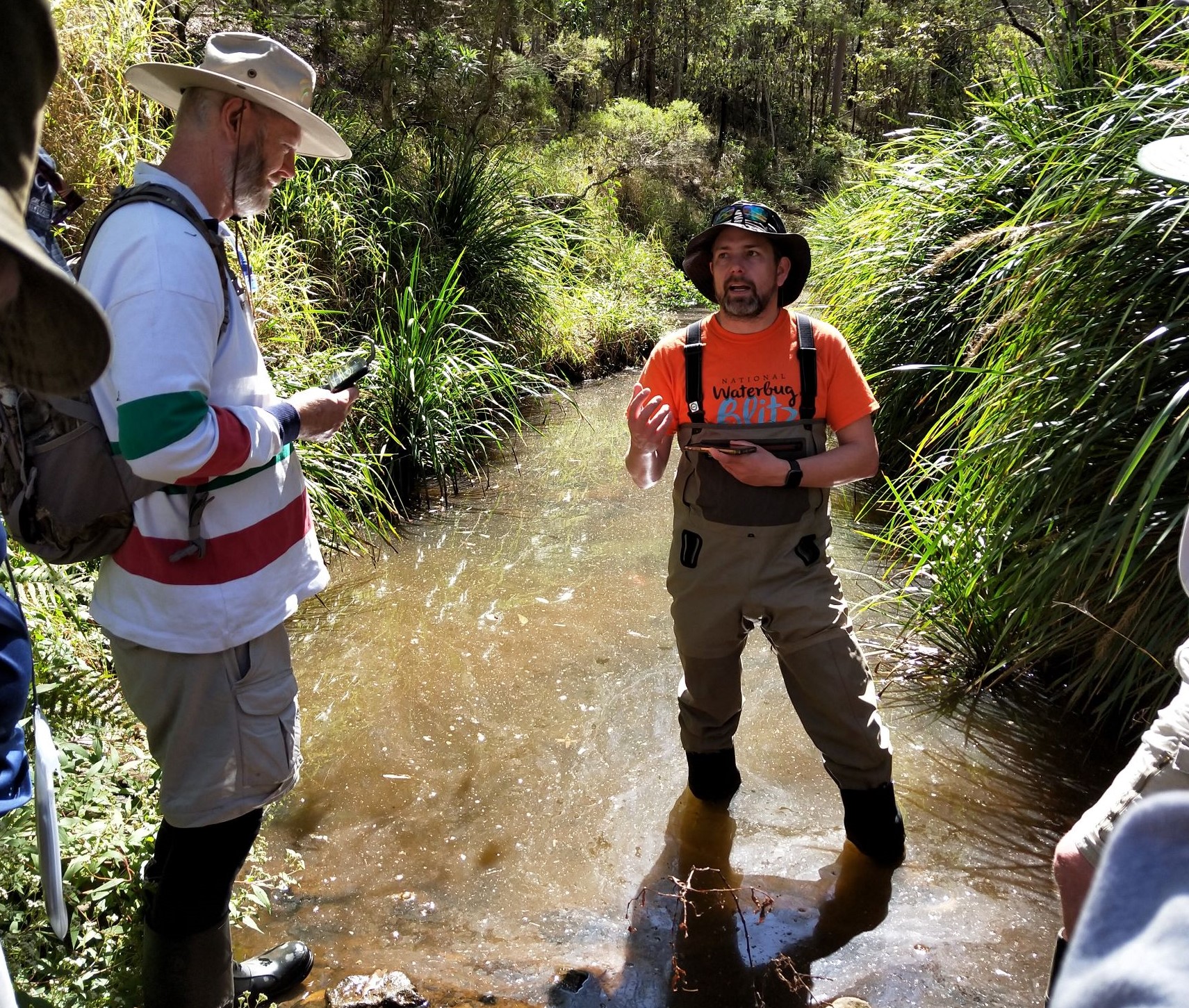
Waterbug Training
Many aquatic ecologists use waterbugs to tell them how polluted the water is in the streams that the waterbugs live in. What are waterbugs? The official term is macroinvertebrates. Marcro meaning “large”, and invertebrate meaning “has no backbone”; or in other words, insects, insect larvae, spiders, mites, worms, yabbies and prawns.
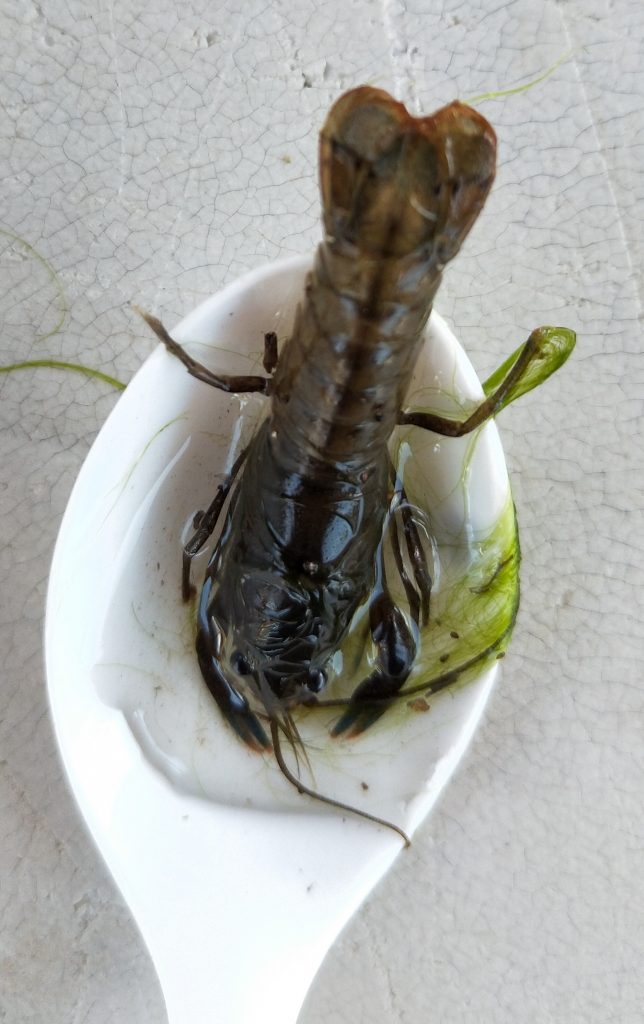
On Sunday 25th August, experienced aquatic ecologist Cecil Ellis came from Sydney to train an enthusiastic group of volunteers from SLNC, neighbouring environmental groups and Scouts and Girl Guide leaders in waterbug sampling and identification.
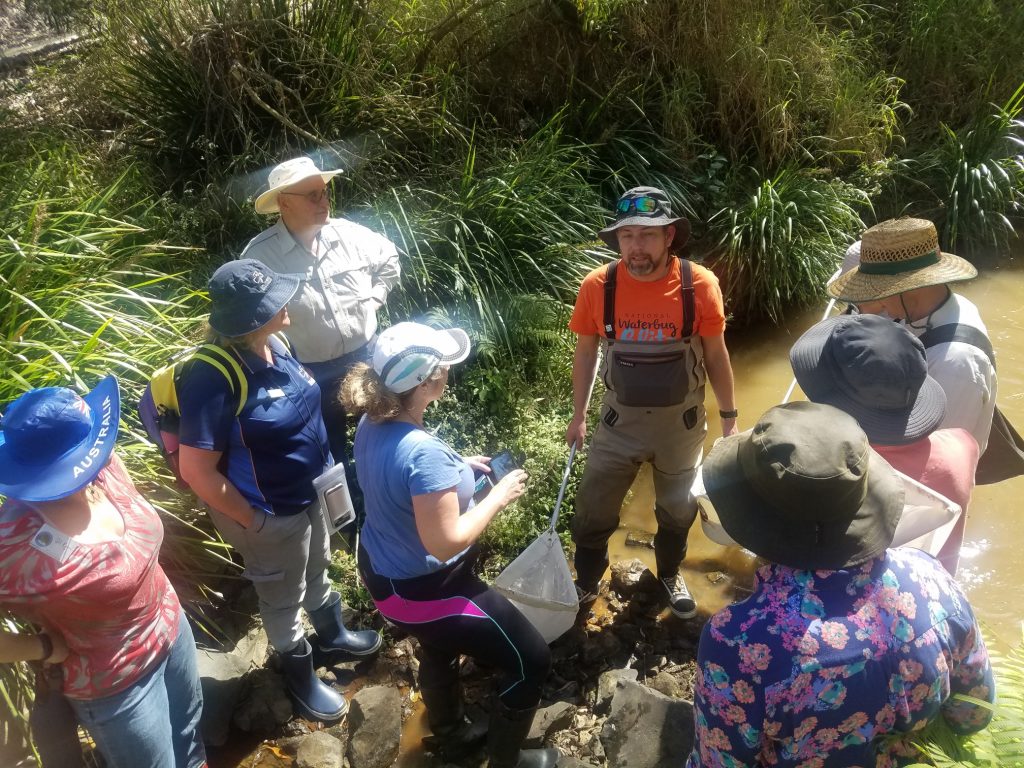
The main aim of the Waterbug Blitz program is to train people to become citizen scientists to captured data about the water quality of creeks and rivers across Australia. The workshop was made possible through funding from Ipswich City Council.
Each of the different waterbug species can tolerate living in water of different quality. Some species can only live in water that is near pristine, whist others can survive in water that is of poor quality. The data provided the group with an insight into the total biodiversity of what is living in the water. The abundance of waterbugs, total waterbug diversity, and type (taxa) of animals are combined to give a SIGNAL score (from 0 to 10) for the waterway. SIGNAL stands for “’Stream Invertebrate Grade Number – Average Level”. If one finds a wide variety of taxa and species including those that can only tolerate clean water, then the habitat will get a high score, 8 – 10. However, if only a few species are found, or only those species that can tolerate living in poor water quality, then the score will much lower, 1 – 3.
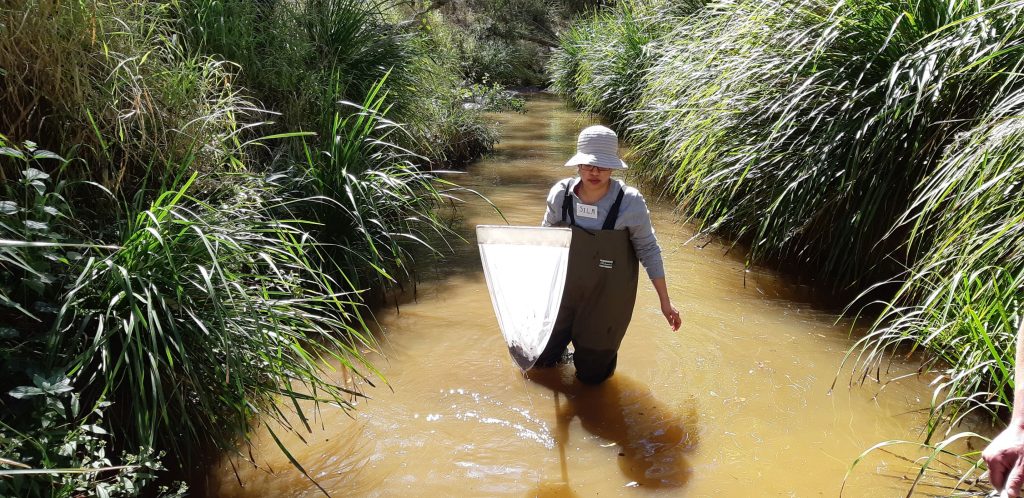
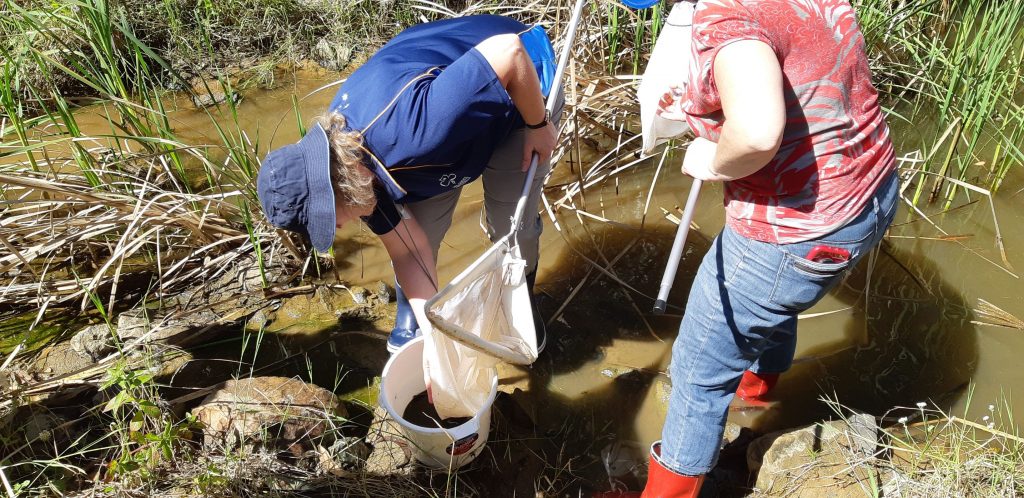
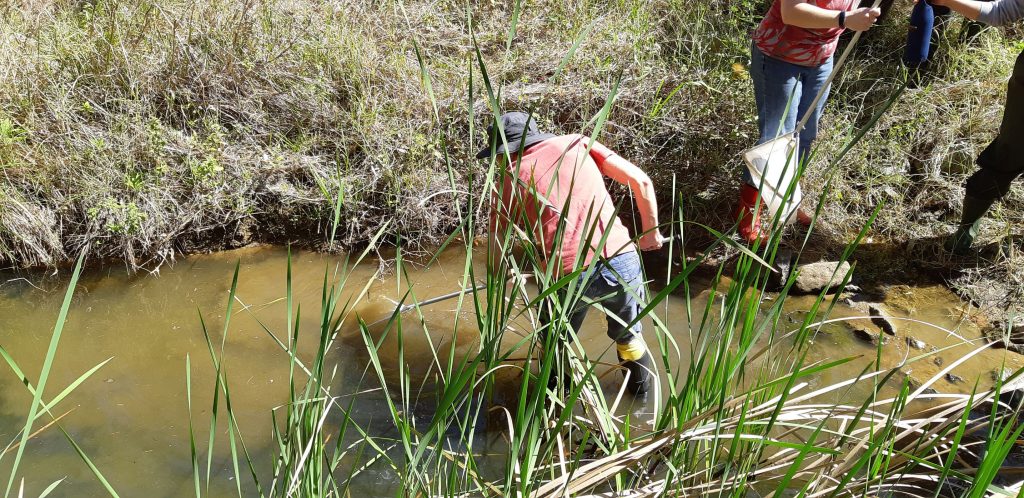
After collecting our samples – in this case from a reach of Opossum Creek above Discovery Lake – we sat down to identify what we had. Whenever we saw something moving, we caught it and put it in our sample tray for closer identification. We were assisted in this through the use of the Waterbug App on our smart phones. The app took us through a series of taxonomy questions based on physical characteristics that allowed us to identify the taxa of the organism down to Order, and sometimes Family level (but not species). The data was entered into our smart phones, summarised into a SIGNAL score and then sent off (including photos) to the national database.
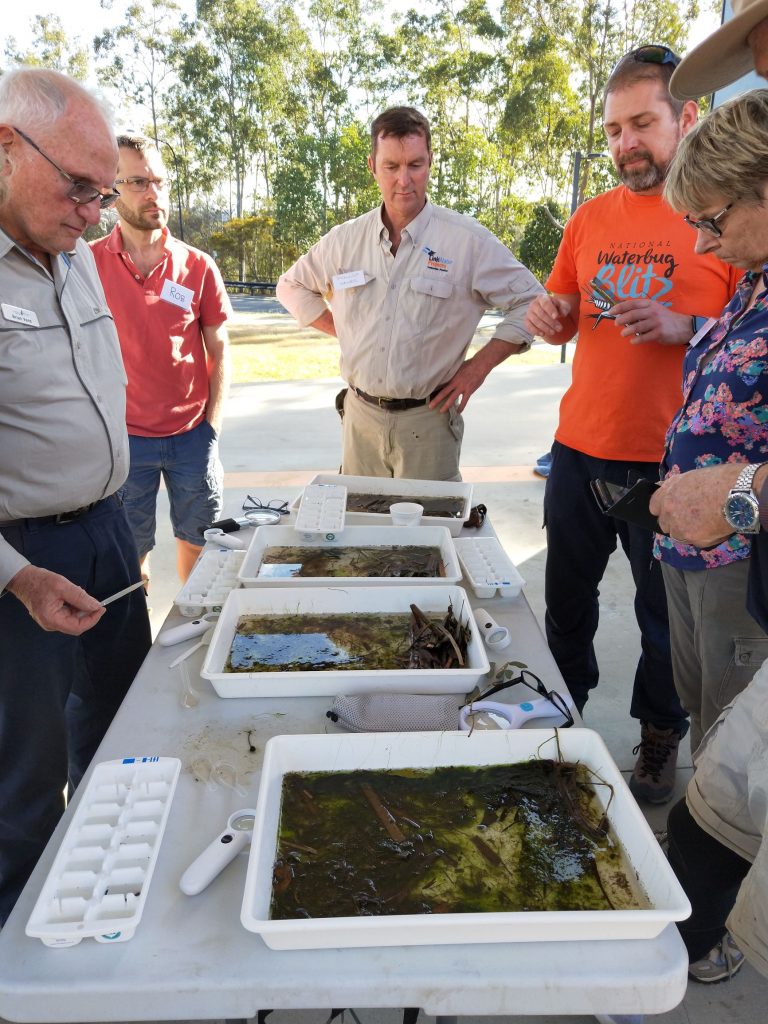
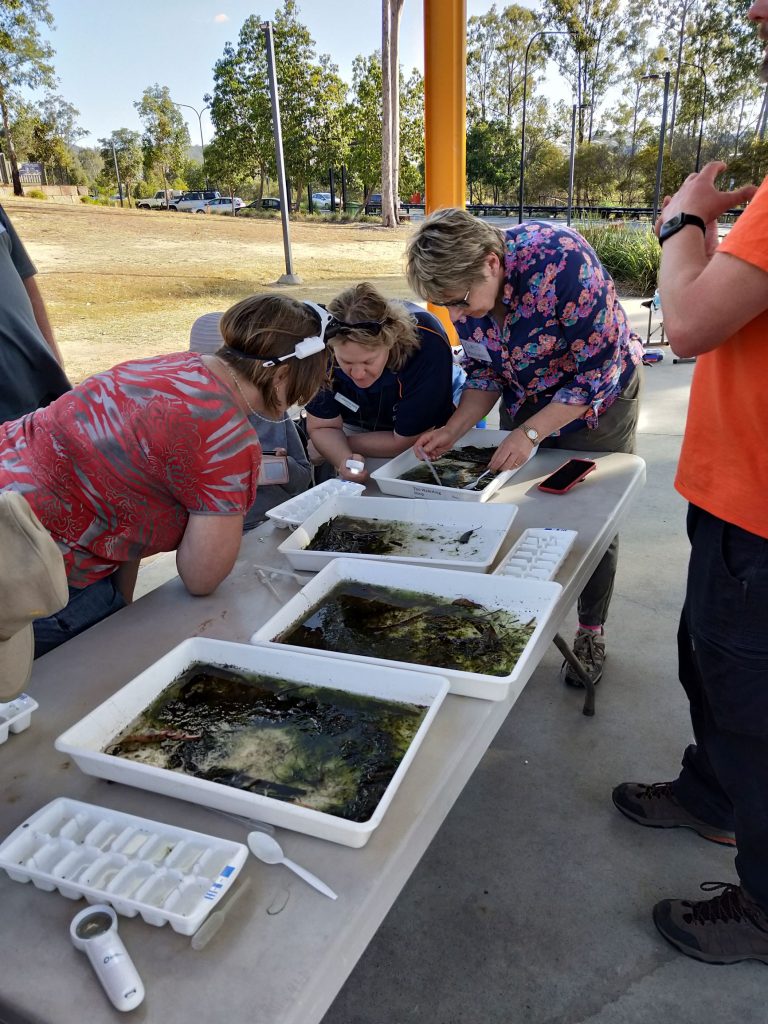
When the sampling site was first scouted there was flowing water. However, by the time of the training we were lucky that there was still some water left ponded in the creek. The expert said that in this semi-urbanised environment, and without flowing water, that the water quality would be poor – especially with regard to the dissolved oxygen that all aquatic organisms need to breathe. Nevertheless, we found 22 different taxa, including caddis fly larvae, dragonfly larvae, damsel fly larvae, mites, a blood worm, freshwater prawns and two types of yabbies. However, the SIGNAL score came out as 3.4, which is regarded as poor, although the expert said that it was better than he expected.
His parting words were – after it rains, we should go out again and practice our new skills. We’re still waiting for some decent rain to get the creek flowing again!
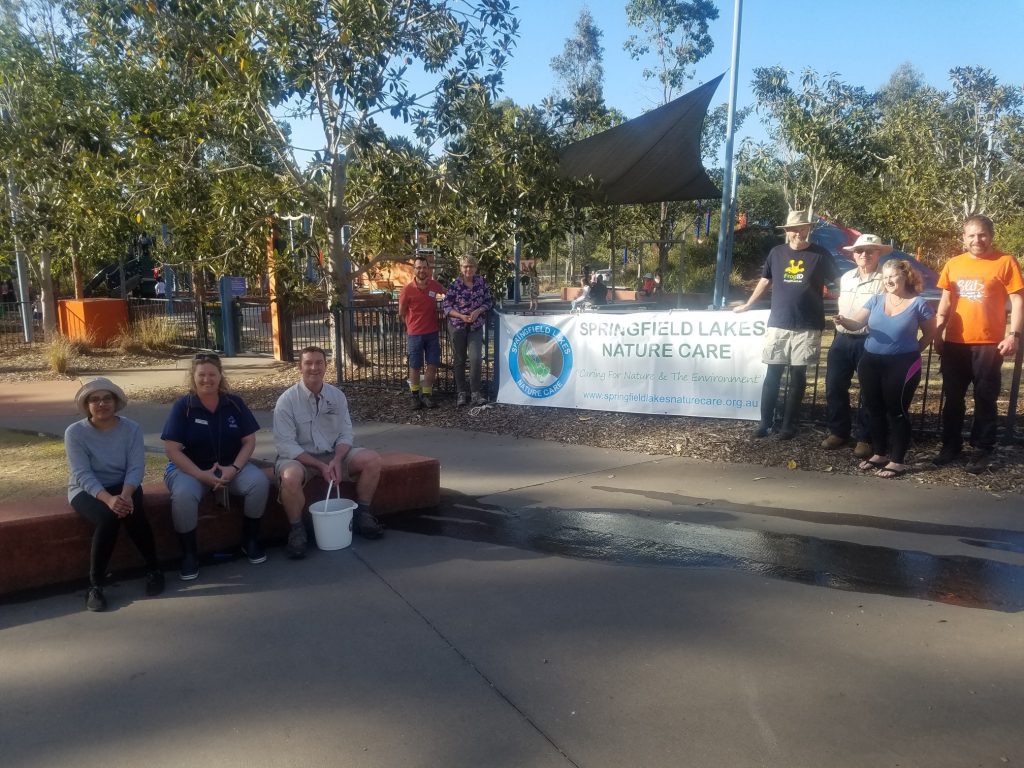
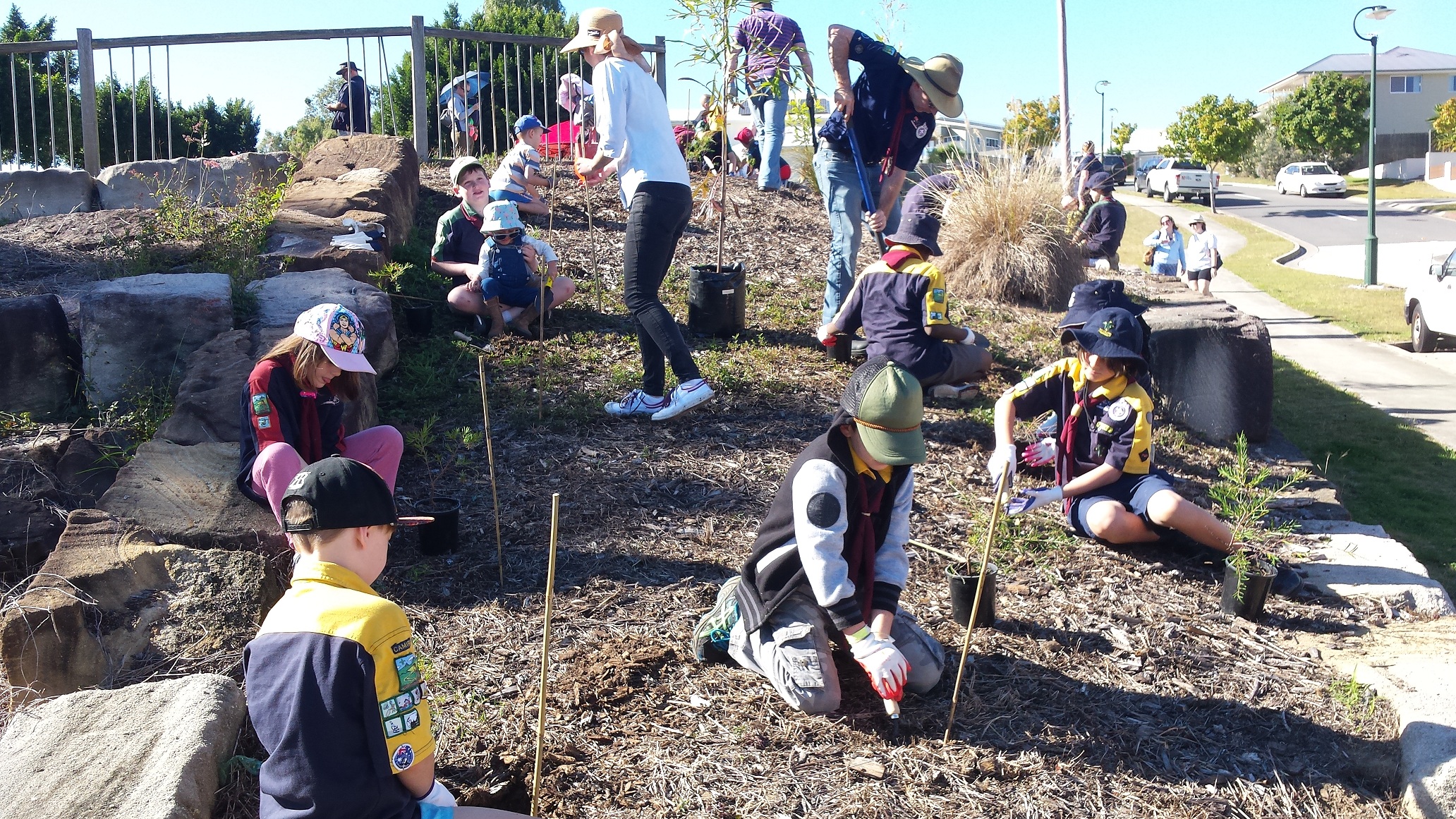
NATIONAL TREE DAY
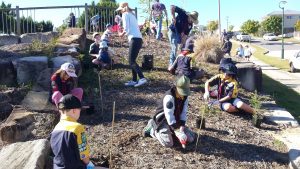 Saturday 29th July Springfield Lakes joined forces with Scouts Camira and the Springfield Lakes Girl Cuides to plant some native plants in a section of parkland near the Promenade. Over 30 people attended the event planting 3 Buckingham Celissium, 40 grevillieas and 30 native grasses.
Saturday 29th July Springfield Lakes joined forces with Scouts Camira and the Springfield Lakes Girl Cuides to plant some native plants in a section of parkland near the Promenade. Over 30 people attended the event planting 3 Buckingham Celissium, 40 grevillieas and 30 native grasses.
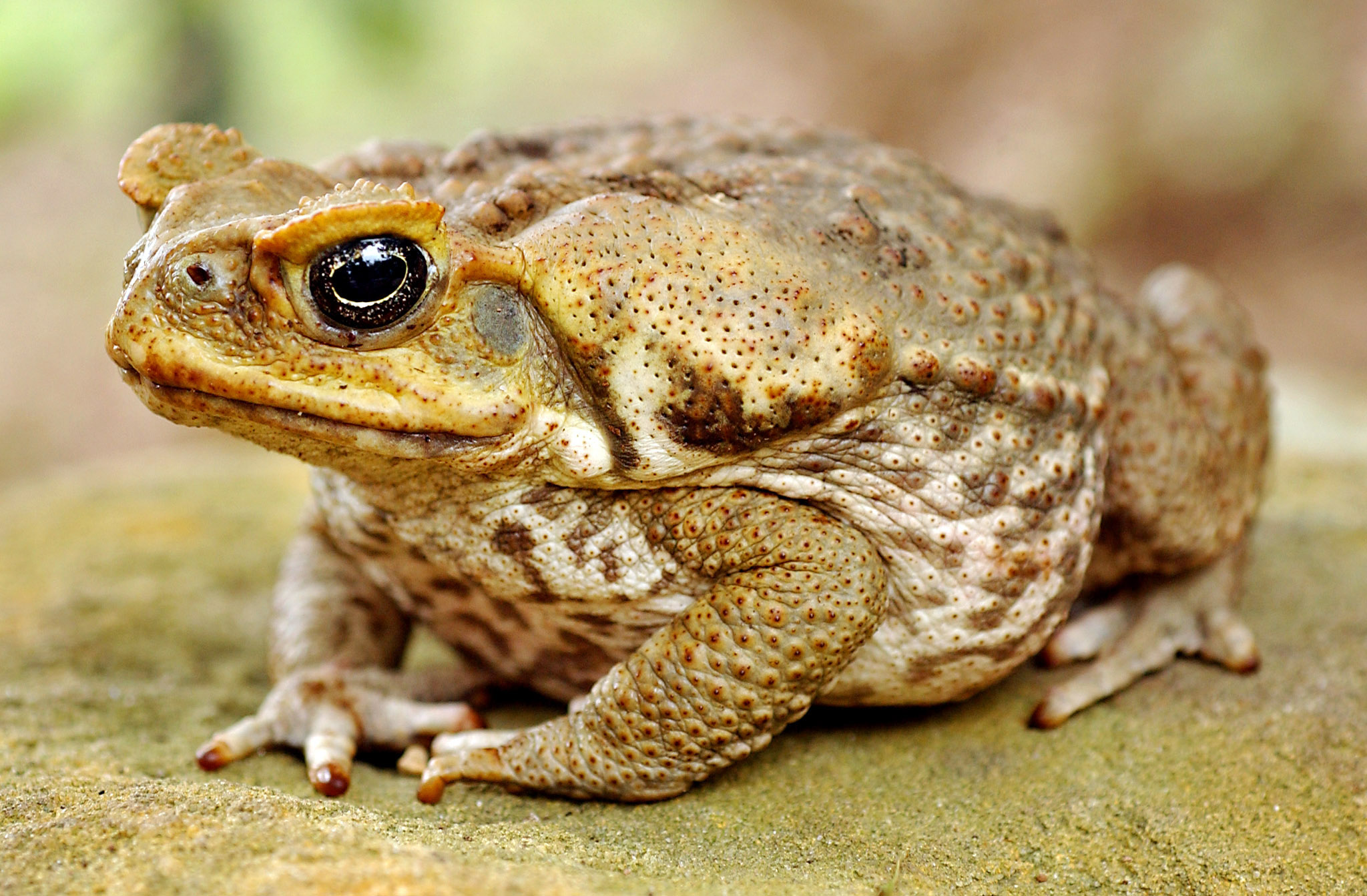
Cane Toad Challenge
Springfield Lakes Cane Toad Challenge
Background:
Cane toads (Rhinella marina) are exotic pests that wreck havoc in the environment. This occurs in two ways.
- They are voracious eaters of anything that they can fit in their wide mouths. An excessive toad population results in less food for native wildlife (especially birds, frogs and small mammals) and thus reduced populations of natives. If anyone has noticed the lack of Christmas beetles over the past number of years – blame it on the toads. Toads also eat dung beetles, which are one of the greatest success stories of biocontrol. Before dung beetles were introduces, cow pats just sat on the ground and built up a mass of flies that were vectors for disease. The Australian “cork hat” was an essential item of clothing before dung beetles started doing their job so well. See information on this issue at the following link http://www.sciencealert.com/cane-toads-are-eating-the-dung-beetles-that-keep-australia-clean.
- Being poisonous. Toad toxin is concentrated in their warty skin and secreted by two large parotoid glands behind the ears (it cannot “spit” poison at you). A sticky white substance, it is highly dangerous if eaten or rubbed into the skin or eyes. Their toxic mucus kills most native lizards and mammals that try and eat them. In urban environments, thus also includes pets such as cats and dogs. Ibis are one of the few animals that can eat cane toads with no problem, especially the toadlets. Thus the large number of ibis that are now seen around.
Objectives
- Enhance the biodiversity of our environment by reducing the impacts cane toads have on native wildlife
- Reduce poisoning rates of household pets from licking and ingesting cane toads.
- Build community capacity in frog identification skills so that residents can feel comfortable & confident in dealing with toads independently knowing that they are not killing native frogs
Rationale
Many Queenslanders consider the killing of cane toads as not merely a responsibility but a state birthright. However, being cruel to cane toads is actually unlawful under the Queensland Animal Care and Protection Act 2001, which means no cricket bats, golf clubs or kerosene baths. Note: people have lost sight in an eye when using the ubiquitous golf club, the toxin being squeezed out and squirting upwards on club impact.
We live with cane toads in our community but very few people would know how to identify a toadlet or the cane toad eggs.
Reducing the numbers of cane toads in the Springfield Lakes environment will allow the native wildlife here a chance to continue to exist and thrive. These pests cannot be eliminated, but they can be controlled so that they have less of an impact. Just reducing them from plague proportions to common, would provide a benefit to native wildlife, and for people walking around on lakeside pathways. Humans introduced this species to Australia, so it is up to us humans to become the top predator to control their numbers. Just imaging if every citizen of Springfield lakes killed one cane toad a week. There would be virtually none left!
Method
With support from an Ipswich City Council Community Development Fund grant, SLNC is running Toad Busting workshops and events in an attempt to encourage the community to combat this menace in a humane and environmentally safe way.
A key aspect of the initial workshops was to educate and train participants as to what is a cane toad and what is a native frog, as some frogs look very similar to toads, especially when small, and we don’t want to accidently kill the frogs that still live around our lakes.
SLNC engaged a qualified and experienced field ecologist, Kay Montgomery from Ecological Connections, to deliver these workshops to SLNC group members, other community group members, and interested people from the local community.
Training also involved how to safely catch toads and humanely handle and euthanise them. We also learned how to identify cane toad eggs and the best way to remove these from the water (a garden rake).
Initially the members of the SLNC group would be trained but when more events are held the wider public would be given instruction and education. Once people knew how to identify and eradicate the toads effectively, they could teach other residents, and this would help sustain the project.
The workshops would provide Free training to other community groups such as the Scouts so that they could educate their members and in turn they could hold a toad busting night themselves as the costs of holding the event are minimal eg only requiring dry ice.
The free workshops will provide information and educate residents on how to eradicate toads from the community and essentially a better educated community about cane toads
By repeating the experience through further events, it gives the members and public an opportunity to practice the skills and knowledge learnt, keeps the issue current in the community’s conversation which also acts as an avenue to promote education and awareness. The numbers of toads caught could be published in newspapers and on websites. This would enable the community to have ownership of a significant issue as they see themselves directly contributing to a common goal. We would promote the idea of volunteering to participate and giving something back to the environment as a worthwhile activity. Statistics show that connecting with nature and the outdoors does have benefits on people’s health and well being
After collecting toads (always wear gloves), which often congregate around park gardens under street lights, the animals that are confirmed to be toads are put into an esky containing dry ice. This frozen carbon dioxide is very cold and the toads go into hibernation, and as the dry ice melts it releases carbon dioxide, which eventually kills the toads. When the dry ice is totally melted, the toads are put into a freezer for at least 48 hours to make sure that they are dead. For toad-busting outside of these SLNC event, the dead toads are disposed of in the weekly rubbish collection. However, SLNC is now part of the “Cane Toad Challenge”, and our captured toads have a different fate.
Cane Toad Challenge
SLNC has signed an agreement to become an affiliate of the Cane Toad Challenge. The University of Queensland – Institute of Molecular Biology has developed a bait that attacts cane toad tadpoles (which SLNC calls toadpoles) and draws them into traps set in waterbodies. Hundreds of toadpoles can be removed each day. The bait is made out of the toxin from adult cane toads, either to attract the toadploes to a living adult toad so that the toad can have a good meal (cannibalism) or to attract the toadpoles to a dead adult so that the toadpoles have a good meal.
However, the researchers need to have a supply of toxin to make the baits. SLNC members cut (excise) the toxin glands off the dead adult toads, refreeze the glands, and then take it into the University and give to the researchers. In exchange, SLNC receives free baits to use in the toadpole traps that we have constructed. These traps consist of a plastic box with a funnel attached to the each end – narrow part inside, and the large opening facing the environment outside. The bait exudes the attractant out the funnels into the water, the toadpoles follow the scent back in from the funnels, then can’t find there way out (although they probably don’t want to leave).
The baits are only effective for about 24 hours and the trap needs to be checked, toadpoles removed, and baits replenished each day of use. If there is any bycatch of native frog tadpoles or native fish or other fauna, then these can be safely removed before taking the toadpoles out. Toadpoles are distinctive, and could only really be confused with the green tree frog tadpole. Both are black, but the toadpoles have a bigger head and narrower tail, and a totally transparent dorsal fin on their tail. The green tree frog tadpole has black spots on their transparent dorsal fin. The toadpoles are also killed humanely using the cool-freeze method, and then discarded in the weekly rubbish after death (48 hours in the freezer).
SLNC is conducting regular toad-busting sessions during the summer months, usually on a Friday night so school aged children can join in.
Learnings:
A number of identifying features exist for cane toads, but some are shared with native frogs so all all must be present to confirm that it’s a toad.
- Bony ridges over the eyes.
- Bony ridge along nose.
- Ear is visible
- Warty skin on back
- Large toxin gland behind the ear.
- None or only slight webbing between fingers and toes (cane toads use their feet for digging, not swimming)
- No suckers on fingers or toes
The best way to reduce cane toad numbers is to collect and destroy the eggs before hatching.
- An average clutch of eggs, laid in a double strand in a long strand of gelatinous jelly, contains more than 30,000 eggs, more than any species of native Australian frog.
- The toads lay eggs a few days after rain, and the eggs hatch from them two to five days after.
- A garden rake is a good way to collect eggs, but you have to be able to identify them and there is only a limited window of time to collect them.
- The next best way to reduce cane toad numbers is to collect and destroy the toadpoles before they metamorphose into thousands of tiny jumping toads – which then can impact on native fauna.
- Cane toad tadpoles look different to native species. They are jet black with big nostrils and a wider body across the gills. https://youtu.be/h7WK59UCry4. They also swarm in groups is shallow still water,
The easiest way to tell a male from a female is to pick it up (being careful to wear sturdy gloves). A male will sound out a short trill, known as a “release” call. This release call is designed for use in mating. Amorous male toads are not fussy about what they grab and will often latch onto another male. The trill is the toad equivalent of “Sorry buddy, I don’t swing that way”. Some researchers have developed toad traps that attract female cane toads by using recording of the male toads call. The lower the pitch of the call, the more success.
Event Results:
13/10/2017 – Spring Lake (pontoon area): Training event at Spring Lake – Camira Scouts (20 scouts & scout leaders) plus some SLNC members and 1 person from the general public. 15 min collected 29 toads (before rainy season breeding)
19/10/2017 – Regatta Lake (Teenager Park area): collecting for media event. Two people (father & daughter). 45 min collected 9 toads.
17/11/2017 – Spring Lake: Training event at Spring Lake – 11 participants. 1 hour collected 109 toads and an estimated 1000 baby toadlets.
19/11/2017 – Regatta Lake (Teenager Park area): One person. 45 min collected 15 toads.
A history and facts of cane toads in Australia.
Cane toads are native to South and Central America. They are extremely hardy animals and voracious predators of insects and other small prey. These qualities led to their introduction into Australia as a means of controlling pest beetles in the sugar cane industry in 1935, before the use of agricultural chemicals became widespread.
The 102 cane toads that began the Australian invasion (51 males and 51 females) were sourced from Hawaii, where they had in turn been imported from Puerto Rico. It took one week for the toads to start laying eggs, and another three days for the eggs to start hatching. Within weeks they had thousands. The toads were initially released around Cairns, Gordonvale and Innisfail, with subsequent releases at Ingham, Ayr, Mackay and Bundaberg. Cane toads reached Brisbane in 1945, Byron Bay in 1965, the Northern Territory in 1984 and Western Australia in 2009.
Although cane toads exude a highly toxic substance, they only do this when under direct threat on their lives. There is no evidence that cane toads poison waterways or spread disease.
Vets also warn pet owners of the dangers of letting domestic animals “mouth” cane toads. Animals absorb the poison through their lips and gums and can die in 30 minutes. Information on symptoms and treatment can be found here http://www.greencrossvet.com.au/Pet_Care_Information/Article-57/POISONING.aspx. If you do find your pet drooling excessively, with red gums, vomiting or paralysed, rinse their mouth out with cool running water for at least 10 minutes and observe them closely. If they show signs of cane toad poisoning, take them to the vet immediately.
In 2006, the West Australian government employed the country’s first cane toad sniffer dog, Nifty the Belgian malinois, to help detect cane toads bearing down on its border with the Northern Territory. Nifty was used on Stradbroke Island to find cane toads at the tip and around the wharf areas where toads hitch a ride on ferries, in boats and eskies. This effort was part of the Moreton Bay Oil Spill clean-up, and there was a greatly increased number of visitors to the island.
Cane Toad trap
http://www.environment.nsw.gov.au/resources/pestsweeds/cane_toad_infosheet.pdf
Humane killing of cane toads
Most of us consider cane toads pests; however, they are animals and can suffer pain. They must be handled and killed humanely. In fact, the Queensland Animal Care and Protection Act, 2001, makes it unlawful for us to be cruel to cane toads.
The first step is to ensure that you have identified the animal correctly. As an adult, the cane toad is fairly distinctive: it is larger than most native frogs and has a warty, rough skin on its back. However, when the toad is younger and smaller it can appear similar to some native frogs. If in doubt with your identification seek help before killing it.
Detailed information on the humane killing of cane toads is available in the Australian Government publication, Standard Operating Procedure for the Humane Field Euthanasia of Cane Toads (SOP) which has been based on a comparative study of the humaneness of a range of different cane toad killing methods.
No methods are listed in the SOP as unconditionally acceptable, but there are three methods listed as conditionally acceptable. These are:
- spraying with Hopstop®;
- stunning followed by decapitation and;
- prolonged exposure to carbon dioxide.
A further method, cooling followed by freezing, is listed as not acceptable in the SOP, however, recent research suggests that this method may be more humane than previously thought and may be the most humane and reliable method for untrained people where Hopstop® is unavailable.
The following methods can be used without formal training:
- HopStop®
(Hopstop® is an aerosol spray that has been specifically developed for killing cane toads and is commercially available for this purpose. Information on where to purchase Hopstop® is provided through the manufacturer’s website: www.pestat.com.au/html/products.htm.
- Read the instructions on the can carefully before using it and follow them closely.
- Spray the toad twice, leave it for approximately 45-60 minutes, then dispose of the toad in the rubbish bin.
- Always dispose of the body; don’t leave it lying around because it will still be poisonous to companion animals.
- Stepped Hypothermia
- Always wear gloves, thick rubber or gardening, when handling toads.
- Pick the toad up firmly, preferably with your hand over its back, place it in a plastic bag or plastic container and secure. Label clearly.
- Now place into your refrigerator (at 4°C) and leave for 12 hours. This does not kill the toad but does anaesthetise it. This length of time is essential and the toad must not be moving when placed in the freezer.
- Next, place the container with the toad into the freezer (-20°C) for at least 24 hours. This last step will painlessly kill the toad.
- Finally, dispose of the body in your wheelie bin. Alternatively you can bury the body, but this must be deep enough so it will not easily be dug up by dogs or native animals. Remember to wash your hands after each of these steps.
Handling of cane toads is best done by adults. Cane toads can also suffer distress from being chased excessively, so try to make their capture and handling as quick as possible.
The following methods MUST ONLY be used by trained and competent operators:
- Stunning followed by decapitation can also be used to kill individual cane toads, but this method is only suitable for use by confident and skilled operators with the correct equipment and technique. This method must not be used unless those involved have received appropriate training, as ineffective stunning or unskilled decapitation will result in an inhumane death.
- Prolonged exposure to carbon dioxide is the most commonly used method for killing multiple cane toads at a time. This method must only be used by trained operators using appropriate equipment. Death must be confirmed prior to disposal.